
New reading of the Mesha Stele inscription has major consequences for
Mesha Stele (Moabite Stone), 840 B.C.E ., Louvre Museum. Wikimedia adapted. In Numbers 32, we read a long and detailed story of negotiations meant to secure the region of the Transjordan (the area to the east of the Jordan river) for the tribes of Reuben and Gad. After meeting with a furious response from Moses when the topic is first broached.

The Mesha Stele in its current location. The brown fragments are pieces
The Moabite Stone, otherwise known as the Mesha Stele, contains an ancient inscription by Mesha, King of Moab during the late 9th century BCE, elements of which match events in the Hebrew Bible. The inscription describes two aspects of how Mesha lead Moab into victory against ancient Israel.

New Reading Of Mesha Stele And Consequences For Biblical History
(2 Kings 3:4-27). The king's name: "Mesha" is based on the Hebrew word "to save", but it has also been suggested that his name may be related to the Hebrew "Moshe" (Moses). While his personality is rather obscure, he left a clear message on to the stone, which gives us a glimpse of historical events, which were important for the Moabite Kingdom.

Mesha Stele Wikipedia, the free encyclopedia Ancient history
The Mesha Stele,also known as the Moabite Stone,is a black basaltmonument bearing an inscription by the ninth century B.C.E.MoabiteKing Mesha. Discovered in 1868 at Dhiban, Jordan(biblical "Dibon," the capital of Moab), the inscription of 34 lines is the most extensive document ever recovered referring contemporaneously to ancient Israel.
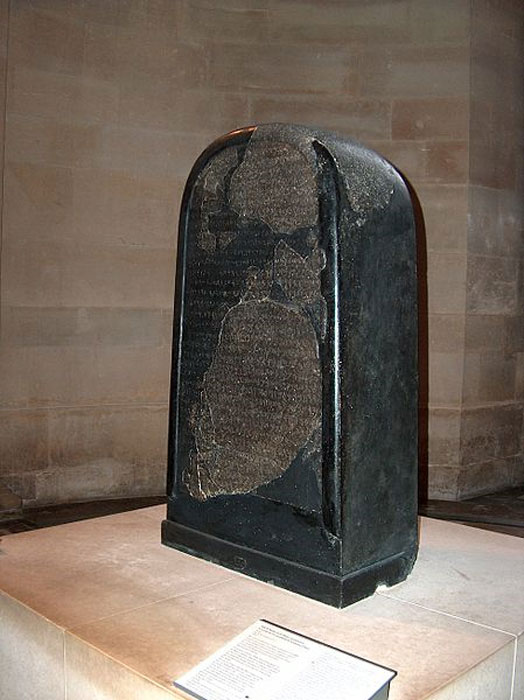
This 2,800YearOld Stele Tells A Bible Story From A Different Point Of
La stèle de Mesha est une stèle de basalte découverte en 1868 et sur laquelle est gravée une inscription remontant à l'époque du roi moabite Mesha (IX e siècle av. J.-C.).Le texte de trente-quatre lignes (l'inscription la plus longue découverte jusqu'à présent pour cette époque de l'ancien Israël), est écrit en moabite.Datée de 850 av. J.-C. environ, elle relate les victoires de.

מצבת מישע המואבית, בה מסופר על כיבוש מואב על ידי עומרי ואחאב מלכי ישראל
He was speaking about the Mesha Stele (also known as the Moabite Stone). This 3-foot-tall basalt stone holds 34 lines of Phoenician script, or paleo-Hebrew, recording the victories of the Moabite King Mesha. Here are a few excerpts from the text: I am Mesha, son of Chemosh (-yatti), king of Moab, the Dibonite

The Israel Stele of Merneptah. c. 1210 BC, currently located in the
The Mesha Stele and King David of the Bible Does the ninth-century Mesha Stele mention King David of the Bible? In the ninth century BCE, King Mesha of Moab set up a stela in his capital Dibon. It chronicled his military victories over his enemies, including Israel and possibly Judah, called the "House of David."

La Stèle de MESHA (Moabite Stone) et la BIBLE AgoraVox le média citoyen
La stele di Mesha (nota nel XIX secolo come pietra moabita) è una pietra in basalto nero, situata in Giordania, che riporta un'iscrizione effettuata nel IX secolo a.C. da re Mesha dei Moabiti .
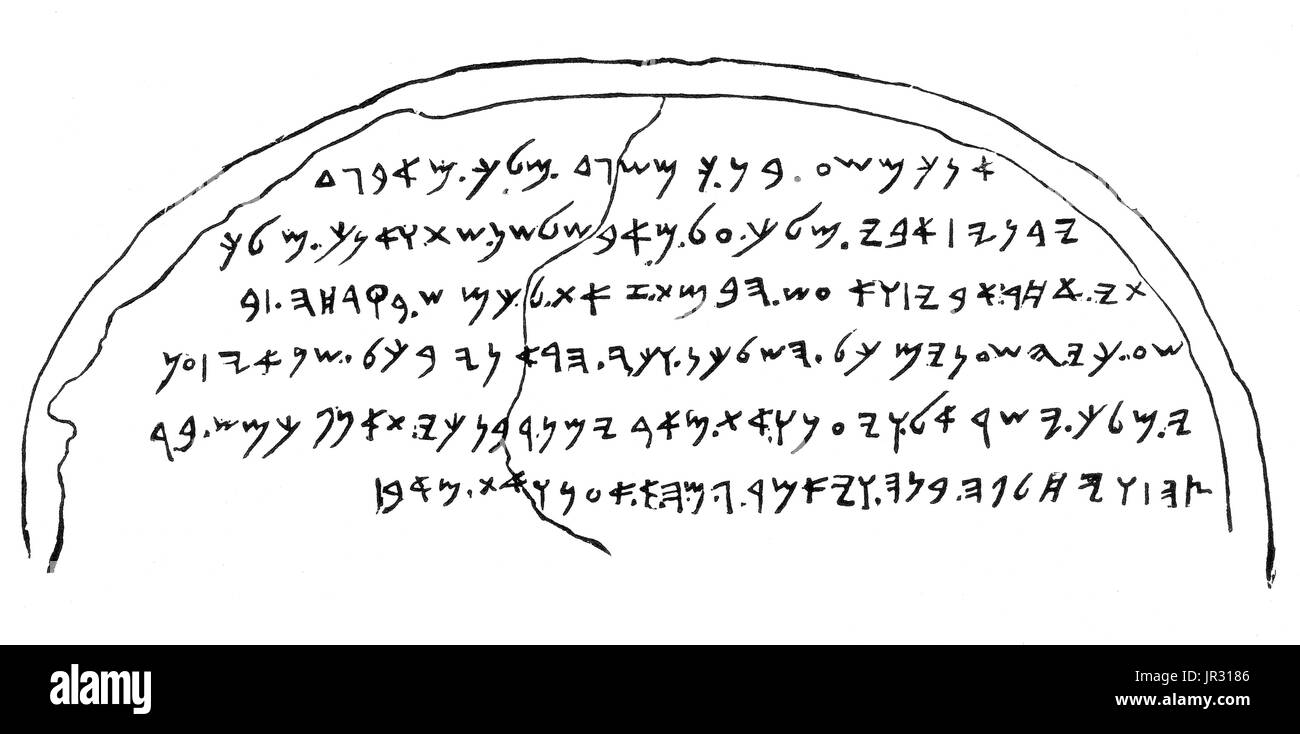
Epigrafia semitica immagini e fotografie stock ad alta risoluzione Alamy
MESHA STELEMESHA STELE , an inscribed basalt stele, measuring about 40 inches (one meter) high and about 28 inches (70 centimeters) wide, erected by *Mesha, king of Moab, at Dibon (today, Dhībân), probably in the third quarter of the ninth century, b.c.e. The shape of the stele, with a flat base and rounded top, is characteristic of those erected by kings of that period.
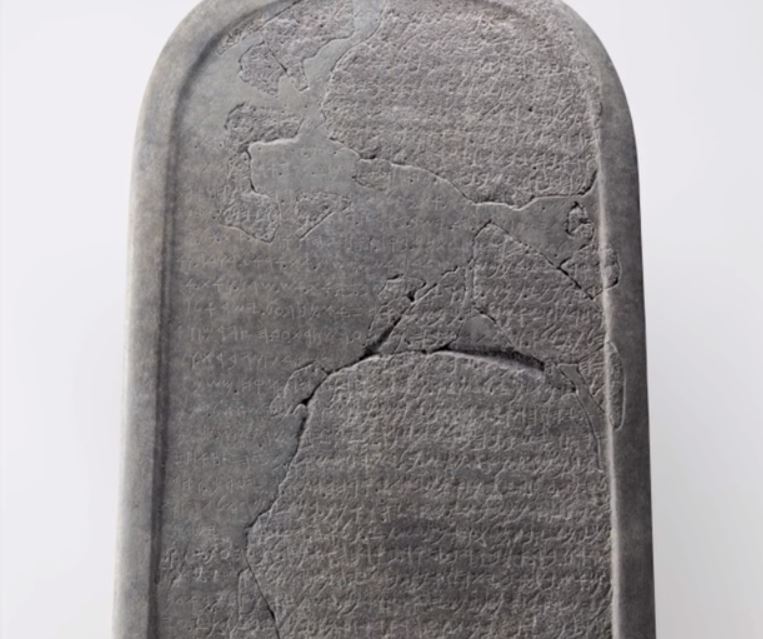
Expo Mesha, la stèle brisée puis raconte l'Histoire The
Carved from black basalt, the Mesha Stele (also called the Moabite Stone) measures about 3 feet tall and 2 feet wide. It contains 34 lines of text, with the possible "House of David" reference appearing on its 31st line. King Mesha set up the victory stela in his capital, Dibon (modern Dhiban in Jordan).
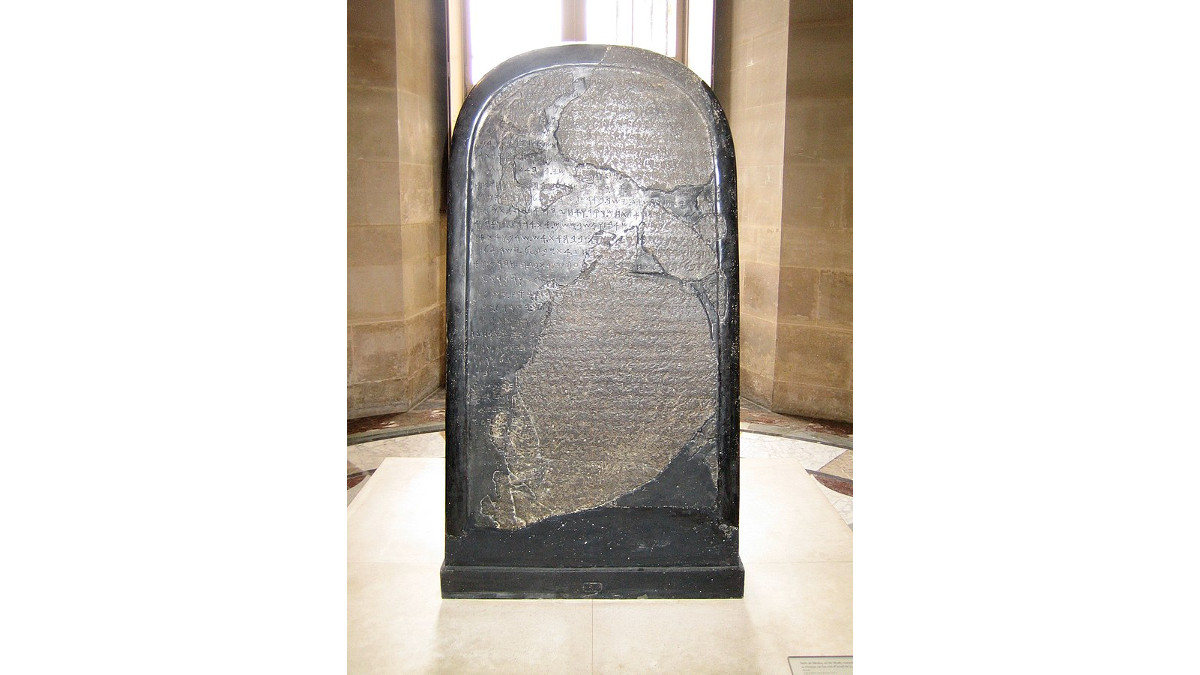
Recenti studi sulla stele di Mesha evidenziano riferimenti a Re David
Mesha dedicated the stele to his deity Chemosh out of gratitude for the latter's deliverance of the Moabites from Israelite rule, and for his help in the conquest of the plain. The stele (lines 4-9) relates, "As for Omri, king of Israel, he humbled Moab many years [lit. days], for Chemosh was angry with his land.

The Mesha Stele
The Mesha Stele is widely considered as authentic, and as a cornerstone of the Middle Eastern archeology, especially after Albright's positive assessment in 1945. Here we summarize the perplexing.

8 Archaeological Discoveries That Support The Bible
The Moabite Stone, also known as the Mesha Stone, contains an ancient inscription of Mesha, the king of Moab dating back to the late ninth century B.C., whose elements correspond to the events narrated in the Hebrew Bible.
The Tel Dan Stele a fragmented stele discovered in Israel in 1992
One of the most exceptional biblical archaeology artifacts ever found, the three-foot-tall Mesha Stele contains a 34-line inscription celebrating the Moabite vassal king Mesha 's rebellion against the Israelites. Renowned epigrapher André Lemaire identified in line 31 of the ninth-century B.C.E. stele the phrase בת [ד]וד ( bt [d]wd.
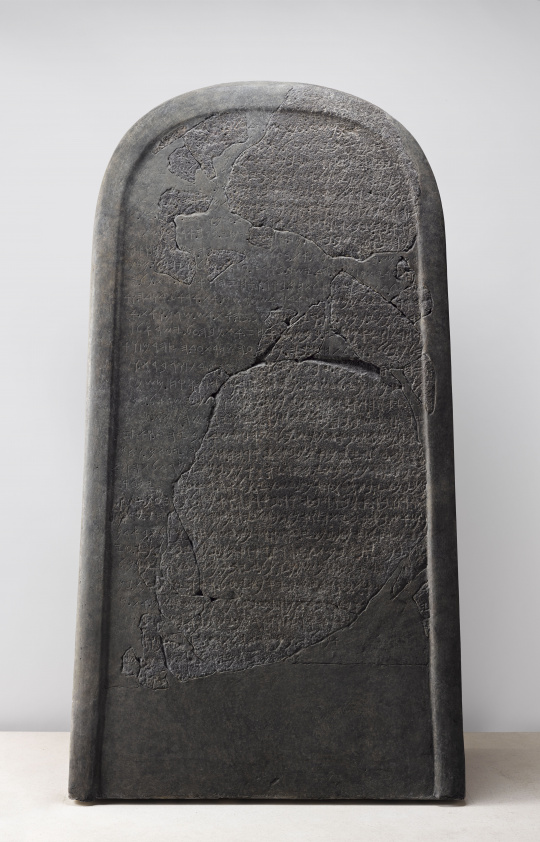
Stèle de Mesha, roi de Moab Images d’Art
The Mesha Stele One of the most important early discoveries in Biblical Archaeology was of the "Mesha Stele" in what is now modern-day Jordan. This massive stone monument from the 9th century BC was inscribed in an ancient language called Moabite, very similar to Hebrew, and it tells the story of 2 Kings 3 from the perspective of King Mesha of Moab, an enemy of Israel and Judah.
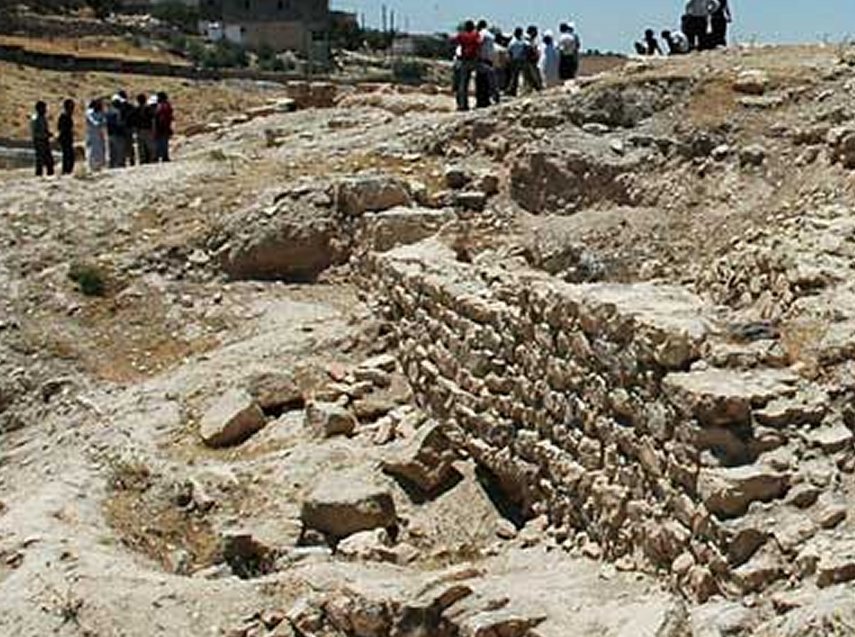
Mesha Stele One Of The Most Valuable Biblical Artifacts Ancient Pages
The Mesha Stele details the victories of King Mesha of Moab over the kingdoms of Israel and Judah. It was found at Dibon, the capital of Moab, and dated to the ninth century BCE. The stone contains 34 lines of text, which have been translated into English. [1] The italicized portions of the text, though likely, are not certain.